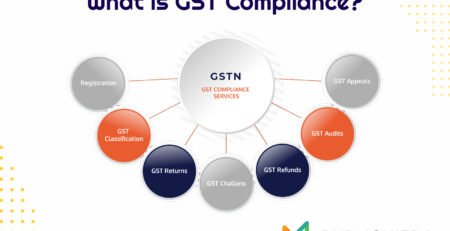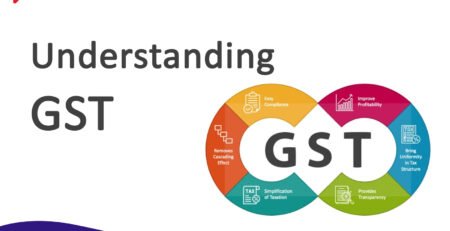F&O Trading Losses: The Hidden Financial Crisis Destroying Indian Retail Investors
The Staggering Reality of F&O Trading Losses in India
The Indian stock market’s futures and options (F&O) segment has become a financial graveyard for retail investors, with devastating losses that paint a grim picture of speculative trading in India. The market regulator’s new study showed that individual traders’ net losses rose to Rs 105,603 crore in FY25, compared to Rs 74,812 crore in FY24, representing a shocking 41% increase in losses.
The numbers tell a harrowing story of financial destruction. Over the past four years, retail investors have collectively lost astronomical amounts:
- FY25: ₹1.05 lakh crore in losses
- FY24: ₹74,812 crore in losses
- FY23: ₹65,747 crore in losses
- FY22: ₹40,824 crore in losses
These figures represent not just statistics, but countless individual stories of financial ruin, broken dreams, and families pushed to the brink of poverty by the allure of quick profits in derivatives trading.
The Harsh Statistics: 93% of Traders Face Losses
The Securities and Exchange Board of India (SEBI) has conducted comprehensive studies revealing the stark reality of F&O trading outcomes. A recent study conducted by capital markets regulator Sebi revealed that over nine out of 10 individual traders in the equity futures and options segment incurred losses during the period from FY22 to FY24.
The updated SEBI findings present an even more disturbing picture. A recent report from the capital market watchdog SEBI suggested that individual traders in India experienced net losses amounting to Rs 1.81 lakh crore in futures and options trading from April 2021 to March 2024, with only 7.2 per cent traders managing to make a profit.
In FY25 alone, 91% of individual traders in India’s equity derivatives market lost money during the financial year (FY)24–25, with the average loss per trader amounting to approximately ₹1.10 lakh. This means that out of every 100 people who ventured into F&O trading, only 9 managed to make any profit at all.
The Human Cost: Average Losses and Personal Devastation
The average loss figures reveal the personal financial devastation experienced by individual traders. In FY24, nearly 7.3 million individual traders lost money with an average net loss of Rs 1.2 lakh per person, inclusive of transaction costs. This represents a significant financial blow to middle-class families who often enter F&O trading with hopes of supplementing their income or building wealth.
The psychological and social impact of these losses extends far beyond mere numbers. Families have reported selling homes, exhausting savings, and even taking loans to continue trading in the hope of recovering losses. The addiction-like nature of F&O trading has led to broken marriages, mental health issues, and in extreme cases, suicides among traders who couldn’t cope with the mounting losses.
Understanding the Mechanics of F&O Trading Losses
The Leverage Trap
Futures and options trading allows investors to control large positions with relatively small capital through leverage. While this amplifies potential profits, it equally magnifies losses. A small adverse price movement can wipe out the entire capital, and in some cases, traders may owe more than their initial investment.
Time Decay and Premium Erosion
Options contracts have expiration dates, and their value decreases as expiration approaches – a phenomenon known as time decay. This works against option buyers, who form the majority of retail traders. Even if the underlying stock price remains stable, option premiums can erode significantly, leading to losses.
Transaction Costs and Brokerage Fees
On average, each trader paid Rs 26,000 just for transaction fees in FY24. These substantial transaction costs create an additional hurdle for profitability. Frequent trading, which is common among retail F&O traders, compounds these costs, making it even more difficult to achieve net profits.
The Stark Contrast: Institutional vs. Retail Performance
While retail investors face devastating losses, institutional players profit handsomely from the same market. In contrast, foreign portfolio investors (FPIs) and proprietary traders booked gross trading profits of Rs 28,000 crore and Rs 33,000 crore, respectively in FY24.
This disparity highlights the fundamental asymmetry in the F&O market. Institutional traders have access to sophisticated algorithms, extensive research capabilities, risk management systems, and professional expertise that retail investors lack. They also have the financial capacity to weather short-term losses and wait for profitable opportunities.
Psychological Factors Contributing to F&O Trading Losses
The Gambler’s Fallacy
Many retail traders fall victim to the gambler’s fallacy, believing that past losses increase the probability of future wins. This leads to increased position sizes and riskier bets in an attempt to recover losses quickly.
Overconfidence Bias
Initial small wins often create overconfidence among new traders, leading them to take larger risks without understanding the market’s complexity. This overconfidence is frequently the precursor to significant losses.
Loss Aversion and Sunk Cost Fallacy
Traders often hold losing positions too long, hoping for a reversal, while cutting profitable positions too early. The sunk cost fallacy makes them throw good money after bad, leading to compounding losses.
The Broader Economic Impact
The massive losses in F&O trading have broader implications for the Indian economy. When middle-class families lose their savings in speculative trading, it affects consumer spending, reduces investment in productive assets, and can contribute to financial instability at the household level.
Household Savings Erosion
Sebi is proposing new rules to make F&O trading less attractive to everyday investors as household savings are being diverted from productive investments to speculative trading. This diversion of capital from long-term wealth creation to short-term speculation hampers economic growth and individual financial security.
Credit Market Implications
Many traders resort to borrowing to fund their trading activities, either through formal credit channels or informal lending. When these trades result in losses, it can create bad debt problems and affect the broader credit market.
SEBI’s Regulatory Response
Recognizing the severity of the situation, SEBI has implemented several measures to protect retail investors:
Increased Lot Sizes
It has increased the lot size from Rs.2 Lakh to Rs.5 Lakh to discourage small retail investors from participating in F&O trading.
Enhanced Disclosure Requirements
SEBI has mandated brokers to provide clear warnings about the risks associated with F&O trading and to disclose the percentage of clients who have made profits versus losses.
Stricter Margin Requirements
The regulator has implemented more stringent margin requirements to reduce excessive leverage and limit the potential for catastrophic losses.
Why F&O Trading Continues to Attract Retail Investors
Despite the overwhelming evidence of losses, F&O trading continues to attract retail investors. Several factors contribute to this phenomenon:
Marketing and Promotion
Brokerage firms and financial influencers often promote F&O trading as a quick way to generate income, downplaying the risks involved. Social media is flooded with success stories and trading tips, creating a false sense of easy profitability.
Accessibility and Technology
The rise of discount brokers and mobile trading apps has made F&O trading more accessible than ever before. With just a smartphone and a small amount of capital, anyone can start trading derivatives.
Economic Uncertainty
Economic challenges and job market uncertainties drive people to seek alternative income sources, making the promise of quick profits through F&O trading particularly appealing.
The Recommendations: Protecting Retail Investors
Education and Awareness
Financial literacy programs should emphasize the risks of speculative trading and promote long-term investment strategies. Understanding the mathematical disadvantage that retail traders face in F&O markets is crucial.
Stricter Regulations
Regulatory bodies should consider implementing more stringent measures to protect retail investors, including mandatory cooling-off periods, limited trading frequency, and enhanced risk disclosures.
Alternative Investment Channels
Promoting systematic investment plans (SIPs) in mutual funds, direct equity investments, and other long-term wealth creation instruments can help redirect retail money from speculation to productive investments.
The Path Forward: Building Sustainable Wealth
The devastating losses in F&O trading serve as a stark reminder that sustainable wealth creation requires patience, discipline, and a focus on long-term strategies. Rather than seeking quick profits through speculative trading, retail investors should focus on:
Diversified Portfolio Construction
Building a diversified portfolio of stocks, bonds, and other instruments reduces risk and provides more stable returns over time.
Systematic Investment Approach
Regular investments through SIPs help average out market volatility and build wealth gradually but steadily.
Financial Planning
Working with qualified financial advisors can help individuals create comprehensive financial plans that align with their goals and risk tolerance.
Conclusion: The Urgent Need for Change
The ₹1.8 lakh crore loss by retail investors in F&O trading over three years represents one of the most significant wealth destruction events in India’s financial market history. With 93% of traders losing money and average losses of ₹1.10 lakh per person, the F&O segment has become a systematic wealth transfer mechanism from retail investors to institutional players.
The human cost of these losses extends far beyond mere statistics. Families have been financially ruined, dreams have been shattered, and lives have been destroyed by the false promise of easy money through derivatives trading. The psychological impact on individuals and families will have long-lasting effects on their relationship with financial markets and their ability to build wealth.
SEBI’s regulatory measures are a step in the right direction, but more needs to be done to protect retail investors from the predatory nature of speculative trading. The focus should shift from quick profits to sustainable wealth creation through disciplined, long-term investment strategies.
The F&O trading losses crisis serves as a crucial wake-up call for India’s retail investors. It’s time to recognize that the house always wins in speculative trading, and the only sustainable path to financial prosperity lies in patient, disciplined, and well-informed investment decisions. The choice is clear: continue down the path of financial destruction through speculative trading, or embrace the proven principles of long-term wealth creation through sound investment practices.












